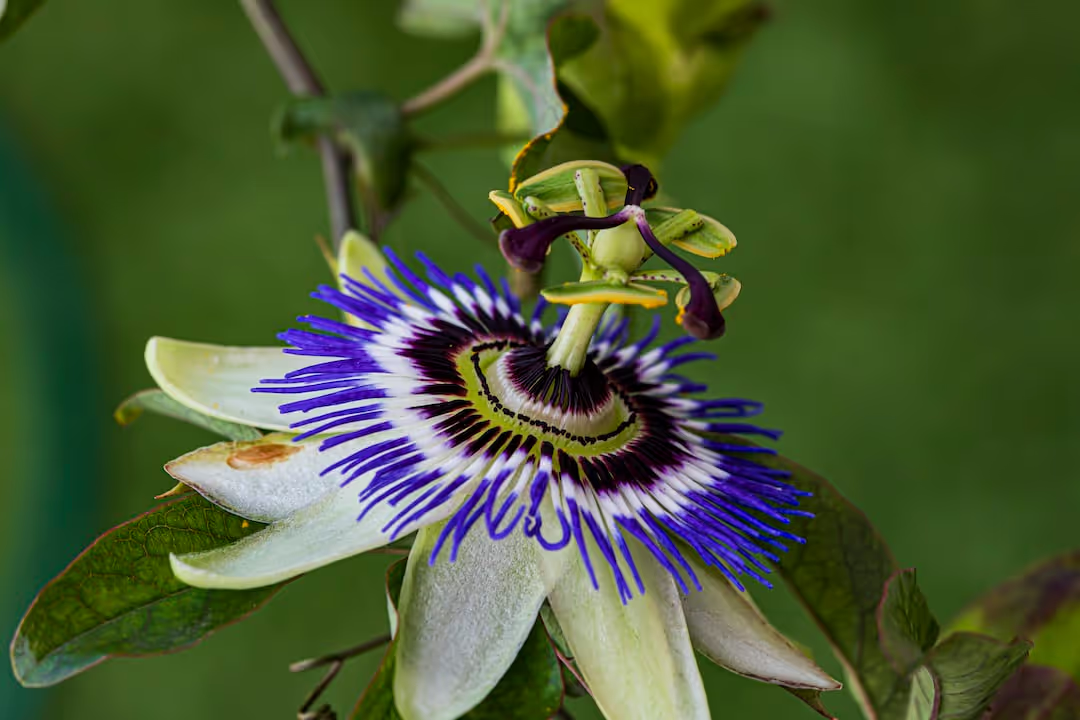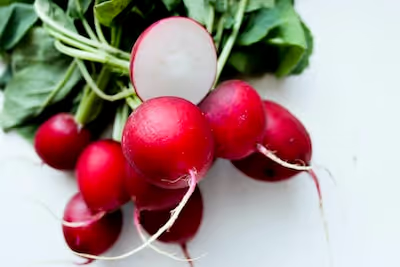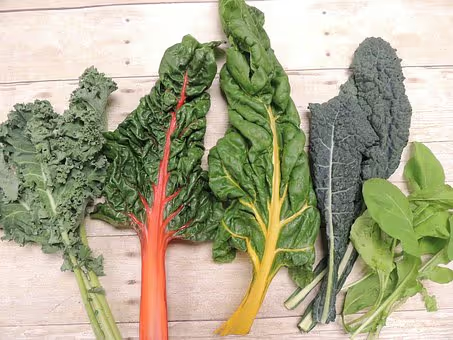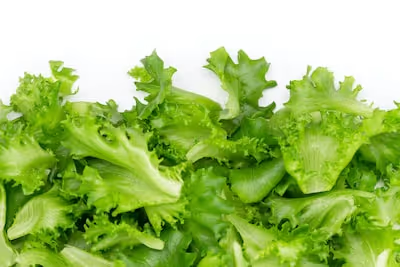Growing Passion Flower as a Stunning Garden Centerpiece

Growing Passion Flower
Growing passion flower turns an ordinary garden into an exotic focal point. Plant passion flower vines in full sun with fertile, well-drained soil and sturdy support to climb. Regular watering and occasional pruning keep this tropical beauty thriving. Read on to learn simple steps for cultivating passion flower into a vibrant centerpiece.
Cheatsheet: Showstopping Passion Flowers in Your Garden
🌞 Site & Light
- Sun: 6-8 hrs direct/day
- Hardiness: USDA 6-10 (–10°C/14°F min)
- Shelter: Block strong winds
🌱 Soil & Planting
- Soil: Fertile, drains fast, pH 6.1–7.5
- Spacing: 2–3 ft (60–90 cm) per plant
- Mix compost at planting
💧 Water & Feeding
- Water: 1" (2.5 cm) weekly
- Mulch to conserve moisture
- Feed monthly with balanced fertilizer
🪴 Support & Pruning
- Train on trellis, arch, or obelisk
- Prune dead stems in spring
- Pinch tips for bushiness
🐝 Pollinators & Fruiting
- Supports bees & butterflies
- Some types yield edible fruit (rich in Vitamin C, magnesium)
🛠️ Tools and Products You'll Need
- Shovel
- Pruners
- Watering can
- Trellis or support
- Mulch
- Organic compost or fertilizer
🚩 Quick Stats
- Blooms: Up to 3 months
- Flowers: 3–5 in (7–13 cm) wide
- Grows: Up to 20 ft (6 m) per season
📝 Steps
- Prep Site: Choose a sunny, sheltered spot. Enrich soil with compost. (30 min)
- Plant: Dig hole twice root-ball width. Set plant at same depth as pot. Space 2–3 ft (60–90 cm) apart.
- Support: Place trellis or support before planting.
- Water: Water deeply after planting and weekly in dry spells.
- Mulch: Add 2 in (5 cm) around base; keep from stems.
- Feed: Fertilize monthly from spring–summer.
- Prune: Trim dead or unruly stems each spring.
- Monitor: Check for pests (aphids, spider mites) and treat organically.
-
Growing Passion Flower as a Stunning Garden Centerpiece
I plant passion flowers where the garden begs for theater, fast growth, and a whiff of the tropics. The flowers look engineered by a watchmaker and a mystic at the same table.
Climate, Light, and Siting
Give full sun in cooler regions and light afternoon shade in hotter zones. Most ornamental types thrive between 65 to 85 F, or 18 to 29 C.
Passiflora caerulea handles USDA 7 to 10 with mulch, and can reshoot from the crown after cold snaps. Passiflora edulis performs best in USDA 9b to 11.
I tuck vines on the warm side of a fence or masonry wall. That reflected heat pushes earlier flowers and richer color.
Quick stat: Kew Science recognizes 500+ Passiflora species, with wildly different cold tolerance and growth habits. Source: Royal Botanic Gardens, Kew.
Soil and Planting
Use rich, well drained soil with a pH near 6.0 to 7.0. I blend two parts compost, one part loam, and one part sharp grit for oxygen at the roots.
Plant on a slight mound if drainage lags. Water in with a seaweed or humic acid drench to settle fines.
Trellis Architecture that Never Fights the Vine
Passion flower twines, it does not cling, so it needs horizontal runs or a mesh it can wrap. I aim for sturdy 12 to 16 gauge wire on eye bolts, spaced every 12 in, or 30 cm.
On obelisks and arches, I add jute or plastic-coated wire for extra grab. Soft ties prevent girdling during summer surges.
Feeding and Watering
Keep the root zone evenly moist, never soupy. In heat waves, deep soak twice weekly.
High nitrogen makes leaves, low to moderate nitrogen makes flowers. I use an organic 3-4-5 or 4-6-4 in spring, then a light top-up midseason.
Pruning: Speed with Restraint
Late winter or very early spring suits structural pruning. I remove dead, crowded, or crossing wood, then reduce long canes by one third to coax flowering spurs.
In-season, I pinch after the fifth or sixth node for branching. Flower buds form on current growth, so keep shoots young and moving.
Pollination, Fruit, and Flavor
Large bees, hummingbirds, and in warm areas carpenter bees handle the job. Some types self-fertile, others need genetic diversity to set heavy crops.
For hand pollination, move fresh pollen to the three stigmas by late morning. Fruit forms best with steady moisture during sizing.
Bloom-to-bite: Many garden passion vines can put on 15 to 30 ft of growth per season, or 4.5 to 9 m, with fruit ripening 60 to 80 days after pollination in warm climates. Sources: Missouri Botanical Garden, UF/IFAS.
Pests, Problems, and IPM
Expect Gulf fritillary caterpillars to chew leaves hard. I let them feast, then the vine rebounds and I get butterflies as payment.
Watch for spider mites in dry heat, scale in shade, and whitefly in greenhouses. A firm water blast, horticultural soap, or a rotate-in of neem handles mild outbreaks.
Avoid crown rot with drainage and airflow. If you see wilting with wet soil, pull mulch back and cut irrigation in half.
Containers for Patios and Small Spaces
Use a 15 to 25 gallon, or 57 to 95 L, container with big drainage holes. I favor a coarse peat-free mix like bark fines with perlite at 20 to 30 percent.
Fertilize at half strength every 3 to 4 weeks from spring to late summer. Root prune and repot every 2 to 3 years before the mix collapses.
Winter Care
In frost-prone zones, mulch crowns 3 to 6 in, or 7.5 to 15 cm, and let tops die back. In containers, roll pots into a bright, frost-free space at 45 to 55 F, or 7 to 13 C.
Resume feeding after new growth breaks in spring. Do not feed late in fall.
Propagation that Works
Softwood cuttings from non-flowering shoots root fast with bottom heat at 75 F, or 24 C. I wound the base, dip in 0.3 percent IBA, and stick in a 1:1 perlite to peat blend.
Layering takes longer but never fails. Seeds need fresh, ripe pulp removed and warmth to germinate, often 70 to 85 F, or 21 to 29 C.
Top Picks: Growing Passion Flower by Goal
- Cold-leaning ornamental: Passiflora caerulea. Root-hardy into USDA 7 with mulch, flowers from early summer, occasional orange fruit.
- Super showy hybrid: P. x 'Incense'. Massive purple flowers, heavy perfume, vigorous, best in USDA 8 to 10.
- Reliable patio star: P. 'Amethyst'. Compact growth, long bloom window, better for containers.
- Edible fruit: Passiflora edulis and P. edulis f. flavicarpa. Needs heat, trellis, and consistent feeding to produce passionfruit with tropical punch flavor.
- Butterfly magnet: P. foetida and P. suberosa. Host plants for fritillaries, great in wildlife plantings.
Design Moves that Put Passion Flower Center Stage
I run a double-wire fan against a south wall, then underplant with silvery artemisia and blue salvias to echo the filaments. The contrast turns heads from the driveway.
On a freestanding obelisk, I pair violet cultivars with apricot daylilies to fire the color wheel. Night lighting makes the corona glow like neon.
Buying Guide for Growing Passion Flower
- Start with strong stock: Look for plants with multiple shoots, no scale or sooty mold, and white, healthy roots poking the drain holes.
- Pick the right size: One to two gallon, or 3.8 to 7.6 L, plants establish faster than oversized rootbound specimens.
- Ask for provenance: For fruiting lines, seek named cultivars and virus-indexed material from reputable nurseries.
- Budget: Expect 15 to 35 USD, or 14 to 33 EUR, for quality container plants, with trellises running 30 to 150 USD, or 28 to 140 EUR.
My Field Notes
In zone 8b I cut back P. caerulea to 12 in, or 30 cm, each February, then side-dress with compost and a low-nitrogen bloom feed. Flower count nearly doubled the year I added horizontal wires every foot.
Hot summer winds can shred new shoots. A windbreak net for two weeks saved the first flush and kept bloom on schedule.
Care Calendar for Growing Passion Flower
- Late winter: Structural prune, refresh mulch, check trellis anchors.
- Spring: Feed lightly, start training, scout for mites weekly.
- Early summer: Pinch tips to branch, deep water, hand pollinate edible types if needed.
- Late summer: Thin congested growth, harvest fruit as it wrinkles and drops.
- Fall: Stop feeding, reduce water, protect roots before first frost.
Common Questions on Growing Passion Flower
Why no flowers? Too much nitrogen, too little sun, or immature wood. Shift feeding to bloom formulas and increase light to 6 to 8 hours.
Do I need two plants for fruit? Many edulis types set better with a second cultivar. I keep two genetically different vines within 10 ft, or 3 m.
Safe around pets? Leaves and unripe fruit can cause stomach upset if chewed. I train vines away from pet runs and pick fallen fruit.
Can I grow indoors? It gets tricky without high light and airflow. A bright sunroom with a stout trellis can work if you prune and pollinate by hand.
Smart Pairings and Alternatives
- For cool gardens: Pair P. caerulea with clematis that blooms earlier, so the show starts in spring and rolls into summer.
- For edible focus: Grow P. edulis with citrus on the lee side of the same trellis to share heat and pollinators.
- Alternative vines with similar drama: Campsis radicans for big trumpets, or Thunbergia grandiflora for tropical curtains, both needing stout supports.
Sources and Further Reading
Royal Horticultural Society plant profiles on Passiflora for pruning timing, siting, and training guidance. RHS remains my baseline for ornamental best practice.
University of Florida IFAS extension notes on passionfruit for trellis specs, pollination, and nutrition in warm climates. Great for edible production details.
Missouri Botanical Garden entries for growth habit, hardiness, and species profiles. Useful for expected size and vigor.
USDA Plant Hardiness Zone Map for matching species to climate. Always check local microclimates before selection.
Frequently Asked Questions about Cultivating Passion Flower
What is the ideal location for planting passion flower?
Select a spot with full sunlight to partial shade and sufficient space for climbing vines. Passion flower thrives along fences, trellises, or arbors, enabling its tendrils to climb and flourish effectively.
What type of soil best suits passion flowers?
Passion flower plants grow vigorously in well-draining, nutrient-rich soil. Amend your garden soil with organic compost to enhance fertility and drainage, supporting healthy root development.
How frequently should I water passion flowers?
Water your passion flower regularly, ensuring the soil remains evenly moist but never waterlogged. Typically, watering deeply about once or twice weekly provides adequate hydration, increasing frequency during hotter, drier periods.
When and how should I prune passion flower vines?
Prune your passion flower in early spring, removing dead or diseased stems to encourage new growth. Additional pruning can control growth or maintain your desired shape throughout the growing season.
Can passion flower tolerate cold climates?
Most passion flower varieties prefer warmer temperatures and can withstand mild winters down to around 20°F (-6°C). In colder climates, provide winter protection or grow passion flower in containers to move indoors during freezing conditions.
What type of fertilizer benefits passion flower growth?
Feed passion flowers monthly during the growing season with a balanced fertilizer, such as a 10-10-10 formulation. Apply according to package guidelines to sustain vigorous growth and abundant blooms, avoiding over-fertilization to prevent excessive foliage growth.
How do I manage pests and diseases on passion flower plants?
Monitor passion flower vines regularly for pests like aphids, spider mites, and caterpillars. Use natural remedies, such as insecticidal soap or neem oil, to control infestations. Maintain proper airflow and sanitation to prevent fungal diseases, removing affected foliage promptly.
Growing Passion Flower throws a shot of color and wild, tropical flair right where you want it. It’s a plant that begs you to slow down, watch the bees work, and maybe sip something cold while you do. Give it sunlight, well-drained soil, and a spot to climb—watch it repay you tenfold with showstopping blooms and a vibe that’s less rigid, more unruly beauty. Treat it like a garden’s main event, and you’ll find your outdoor space transformed. And if you’re craving more unusual climbing vines, schisandra has a similar appetite for attention. In short, with just a handful of care and the right setup, you’ll find growing passion flower is equal parts patience and payoff—the best kind of gardening.
The Homesteader’s Take: Passion Flower for Health & Self-sufficiency
Edible & Medicinal Uses
- Teas & Tinctures: Flowers and leaves steeped provide calming effects and promote restful sleep; dry blooms in a cool, shady place to preserve potency.
- Nutrient-rich Fruits: Passion fruit harvested ripe contains dietary fiber, vitamins A & C, iron, and antioxidants beneficial for immunity and vision health.
- Natural Skin Care: Passion flower infusions soothe inflammation and relieve minor irritations; blend cooled tea into homemade ointments for topical application.
Boosting Pollination & Crop Yield
- Pollinator Attraction: Blooms attract beneficial pollinators, especially bees and butterflies, boosting productivity of neighboring fruit-bearing crops by approx. 20%.
- Interplanting Strategies: Plant passion flower vines close to cucumbers, tomatoes, squash, and melons; pollinator interactions significantly improve fruit set and harvest quantity.
Sustainable & Practical Maintenance
- Vine Mulching: Organic mulch, such as grass clippings, straw or fallen leaves, conserves moisture, mitigates weeds, and delivers nutrients to roots gradually.
- Integrated Pest Control: Introduce ladybugs and lacewings early in season, effectively controlling aphids and spider mites without chemicals.
- Winter Preservation: In climates dropping below 20°F (-6°C), prune vines to approximately 24 inches (60 cm), insulate with burlap wrapping or straw mulch to ensure survival during colder months.
Find out which plants will thrive in your garden!
Answer a few fun questions and get custom plant recommendations perfect for your space. Let’s grow something amazing together!

start your season





